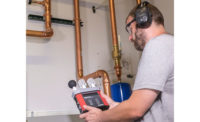Heat stress occurs when employees are exposed to high heat and high humidity environments, indoors or outdoors. Though preventable, heat stress signs and symptoms can go unrecognized until the full exposure to the heat presents itself.
The National Institute of Occupational Safety and Health (NIOSH) has provided heat stress prevention recommendations for years and now the Occupational Safety and Health Administration (OSHA) – is initiating a ruling along with adding a National Emphasis Program on heat inspections for 2022.
NIOSH revealed that when temperatures exceed 88 degrees F combined with strenuous work activities that heat stress is likely. The OSHA proposed ruling requires prioritizing activities when the heat index exceeds 80 degrees F.
The human body wants to maintain an internal temperature of 98.6 degrees F. When exposed to heat, blood vessels expand to activate sweat glands and evaporate sweat from the skin. This removes excess body heat to maintain normal body temperature.
When air is heated and saturated (humid), evaporation is no longer effective. On a hot, humid summer day, that “sticky” feeling indicates the air is saturated with water and our sensory nerves near the skin “feels” its presence. When we sweat, the water on the skin stays on the body. Internal mechanics change, causing chemical changes inside the body, as well.
With saturated air and warmer temperatures, additional heat is generated when performing work. The body no longer cools itself fast enough, resulting in elevated body temperature. Sweating also causes the loss of electrolytes (sodium, potassium, etc), creating a chemical imbalance. A person can lose up to three (3) gallons of body fluids each day through sweating and breathing. Unless body fluids and electrolytes are replaced, dehydration occurs.
Common conditions
The three most common heat stress conditions are heat cramps, heat exhaustion, and heat stroke. Here is a summary of signs, symptoms, and treatment for each.
Heat Cramps Heat Exhaustion Heat Stroke
Painful muscle spasms |
Weakness, nausea |
Extreme emergency |
Profuse sweating |
Profuse sweating |
Stop/no sweating |
Fatigue |
Mental confusion |
Possibly unconscious |
Normal body temperature |
Temperature 99-103 deg F |
Temperature 104+ deg F |
Loss of fluids thru sweating |
Loss of more body fluids |
Body dehydrated |
Normal, wet, warm skin |
Pale, wet, cool, clammy skin |
Red, hot, dry skin |
Treat with sips of tepid/cool water (not salt); get to cool area |
Treat with sips of tepid/cool water (not salt); get to cool area |
Treat with rapid cooling of body; emergency transport |
Additional signs include sweaty palms, impaired physical performance, and change in mood caused by the chemical imbalance in the body. Profuse sweating is also a good electrical conductor (mostly water). This discomfort may cause a person to ignore or skip safety procedures (who wants to wear PPE when it is 100 degrees F outside?).
Note that heat stroke is a life-threatening condition; it must be recognized and treated immediately to prevent death from occurring.
To prevent or minimize heat stress conditions:
- Allow time to for the body to adapt to the heat.
- Drink plenty of fluids, at least eight 8-ounce glasses of water daily.
- Do not wait to feel thirsty; thirst means we are already 25% dehydrated.
- Do not use salt tablets as the salt imbalance caused more dehydration; just add a little extra table salt to food at dinner.
- Eat light. Eat cooler foods and avoid “heavy” foods; keep foods refrigerated and don’t bring foods that require heating to eat.
- Dress sensibly. Wear clothes that “breathe,” such as cotton. Wear a white cotton t-shirt under light-colored, lightweight fabrics. However, appropriate PPE must still be worn! It may generate more heat so schedule frequent short breaks for “cooling” time and replenishing fluids. If outdoors, wear a cap with a brim and wear sunscreen.
- Do NOT consume alcohol. A cold beer after work (hopefully not during) will dehydrate cells. Beer or other alcohol does NOT replenish fluids. It removes more fluids from cells.
- If possible, schedule strenuous work activity during the cooler parts of the day.
Additional protective measures include training employees to recognize heat stress signs and symptoms and report it when observed in themselves or others. Employers must conduct a risk assessment and establish protective measures – ambient temperature monitoring, hydration policies, and providing more frequent break schedules, to name a few. Develop a “heat index emergency plan” to activate when temperatures warrant it.
Follow these basic, commonsense prevention measures to reduce the potential for a heat-related illness or injury. Teamwork is important – keep an eye on co-workers. If you recognize heat stress signs, tell them!
A person’s quality of life on and off the job can be affected, sometimes permanently, depending on your level of heat exposure and risk. Don’t chance it. The power is within your control to prevent heat stress! Optimize that power with commonsense, sensible controls, and prevention.


